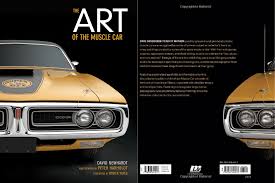A brief history of
Chrysler
Introduction
The car manufacturer Chrysler has made an important impact on the automotive world. In this article we will give a brief but detailed history of the Chrysler marque.
We will look at the origins of Chrysler looking at who, why, where and when Chrysler was founded. We'll look at the design of the iconic Chrysler logo and what are some the more significant Chrysler models.
We'll take a glance at what racing history the Chrysler has and who some of the most important people have been in the history of Chrysler over the years.
Who, where, when and why was
Chrysler founded?
Chrysler is an iconic American car manufacturer that has played a significant role in the automotive industry since its founding. The company was established on June 6, 1925, by Walter Chrysler, a renowned automotive executive and engineer. Chrysler founded the company in Detroit, Michigan, which was already known as the hub of the American automobile industry.
Walter Chrysler's vision was to create a car company that would offer high-quality, stylish, and affordable vehicles to the American market. He believed that every person should have the opportunity to own a well-designed and reliable automobile. Chrysler's goal was to bridge the gap between luxury and affordability, making stylish and advanced vehicles accessible to a wider range of consumers.
One of the main reasons behind Chrysler's decision to start his own car company was his extensive experience in the automotive industry. Prior to founding Chrysler, he had held executive positions at Buick and Willys-Overland, where he gained invaluable knowledge and expertise. With his deep understanding of the industry, Chrysler was determined to create a brand that would stand out in terms of quality, innovation, and value.
Furthermore, during the 1920s, there was a growing demand for automobiles, and Chrysler recognized this as an opportunity to establish his own company. The post-World War I era saw an increase in consumer spending and a desire for more advanced and stylish vehicles. Chrysler aimed to capitalize on this demand by offering vehicles that combined engineering excellence, sleek design, and affordability.
With his passion for innovation, commitment to quality, and desire to provide consumers with accessible luxury, Walter Chrysler successfully laid the foundation for a company that would become one of the major players in the American automotive industry. The company's founding principles and dedication to excellence continue to drive Chrysler's success and influence its vehicle line-up to this day.
How did the
Chrysler logo originate?

How did the Chrysler logo originate?
The Chrysler logo has undergone several transformations throughout its history, reflecting the evolution of the brand and its values. When the company was first founded in 1925, the logo featured a shield design with a blue ribbon and the word "Chrysler" inscribed within it. This logo symbolized the brand's commitment to quality, craftsmanship, and style.
In the 1950s, Chrysler introduced a new logo known as the "Forward Look" emblem. This logo featured a forward-pointing arrow with a stylized wingtip, representing the brand's forward-thinking and innovative approach. The arrowhead shape conveyed a sense of speed and progress, reflecting Chrysler's dedication to pushing the boundaries of automotive design and technology.
In the 1960s, Chrysler adopted a new logo design known as the "Pentastar." This iconic logo featured five interlocking triangles forming a star shape. Each triangle represented one of the five divisions of the Chrysler Corporation at the time: Chrysler, Plymouth, Dodge, Imperial, and Valiant. The Pentastar logo became synonymous with Chrysler and was used until the late 1990s.
During the late 1990s and early 2000s, Chrysler went through a series of mergers and acquisitions, leading to changes in its logo design. The logo featured the word "Chrysler" in a bold and modern typeface, often accompanied by a stylized wing emblem. This design aimed to convey a sense of sophistication, elegance, and contemporary appeal.
In recent years, Chrysler has revisited its classic logo designs, incorporating elements of its heritage while embracing a more modern and streamlined approach. The current logo features a bold and simplified version of the Chrysler name in a chrome-like finish. It signifies the brand's commitment to innovation, quality, and luxury.
Overall, the history of the Chrysler logo reflects the brand's evolution and its ability to adapt to changing times while staying true to its core values. Each logo design represents a chapter in Chrysler's journey, highlighting its commitment to craftsmanship, innovation, and forward-thinking automotive design.
What are some of the significant
Chrysler models?
Chrysler, throughout its history, has produced several notable models that have left a significant impact on the automotive industry, particularly in the realm of high-performance vehicles. From classic muscle cars to modern sports sedans, here are some of Chrysler's most significant models:
In the 1960s, Chrysler introduced the iconic Chrysler 300. The first-generation Chrysler 300, often referred to as the "Letter Series," was renowned for its powerful V8 engines and luxurious features. The 300 became a symbol of American muscle and elegance, with models like the 300C and 300 Hurst setting new standards for performance and style.
During the 1980s and 1990s, Chrysler produced a range of performance-oriented models under its Dodge brand. One standout model was the Dodge Viper, introduced in 1992. The Viper was a true American supercar, featuring a powerful V10 engine, a lightweight body, and a bold, aggressive design. With its raw power and track-ready performance, the Viper became an instant icon in the world of high-performance cars.
In the early 2000s, Chrysler unveiled the Chrysler Crossfire, a collaboration with Mercedes-Benz. The Crossfire featured a sleek and aerodynamic design, drawing inspiration from classic sports cars. It offered a range of powerful engine options and delivered thrilling performance on both the road and the track.
Another notable high-performance model from Chrysler is the Chrysler 300 SRT8. Introduced in 2005, the 300 SRT8 combined luxury and performance in a sedan package. It featured a potent V8 engine, upgraded suspension, and sporty styling cues. The 300 SRT8 provided an exhilarating driving experience with its blend of power, comfort, and style.
In recent years, Chrysler has continued to offer high-performance variants of its popular models. One standout example is the Dodge Charger Hellcat, equipped with a supercharged V8 engine producing over 700 horsepower. The Charger Hellcat delivers mind-blowing acceleration and top speeds, firmly establishing itself as one of the most powerful production sedans available.
Chrysler's commitment to performance is evident throughout its history, with each era introducing remarkable models that push the boundaries of speed, power, and driving excitement. From the iconic Chrysler 300 to the modern-day Dodge Charger Hellcat, these high-performance vehicles have solidified Chrysler's position as a manufacturer that delivers thrilling driving experiences.

One of Chrysler's Most Iconic Models
Who are some of the most important people in
Chrysler's History
Behind Chrysler's success and remarkable vehicles, there have been several influential individuals who have played key roles in shaping the company's direction and leaving a lasting impact on the automotive industry. Here are some of Chrysler's most significant people:
Walter P. Chrysler: As the founder of Chrysler Corporation, Walter P. Chrysler was instrumental in establishing the company's vision and guiding its growth. Known for his engineering expertise and business acumen, Chrysler was dedicated to producing high-quality, affordable vehicles for the mass market. Under his leadership, Chrysler introduced innovative engineering solutions and modern manufacturing techniques that set the stage for the company's future success.
Lee Iacocca: Lee Iacocca is one of the most iconic figures in Chrysler's history. He joined the company in 1978 as CEO during a time of financial crisis. Iacocca spearheaded the successful turnaround of Chrysler, securing government loans and implementing a bold restructuring plan. He was also responsible for the development and launch of the highly popular Chrysler minivans, which revolutionized the family vehicle segment. Iacocca's leadership and marketing savvy helped restore Chrysler's profitability and reputation.
Sergio Marchionne: Sergio Marchionne, an influential figure in the automotive industry, played a pivotal role in Chrysler's modern era. As the CEO of Fiat Chrysler Automobiles (FCA), he oversaw the merger of Chrysler and Fiat in 2009, creating a global automotive powerhouse. Marchionne implemented a strategy that revitalized Chrysler's product lineup and positioned the company for long-term growth. He championed the development of successful models such as the Chrysler 300 and the Jeep Grand Cherokee, emphasizing quality, design, and technology.
Ralph Gilles: Ralph Gilles is a prominent automotive designer and executive who has made significant contributions to Chrysler's product portfolio. Joining the company in 1992, Gilles led the design team responsible for the Chrysler 300, which revitalized the brand's image with its bold and distinctive styling. He later took on various leadership roles within FCA, including Head of Design and Head of the Dodge Brand. Gilles' design expertise and passion for performance have influenced the creation of numerous acclaimed Chrysler and Dodge vehicles.
These individuals, along with many others, have shaped Chrysler's legacy through their leadership, innovation, and dedication to excellence. Their contributions have been instrumental in establishing Chrysler as a respected and influential player in the automotive industry.

One of the most influential people in the history of Chrysler
Chrysler's Racing History
Chrysler has a rich history in racing, with its participation in various motorsports events showcasing the brand's performance capabilities and competitive spirit. Over the years, Chrysler has been involved in different racing disciplines, including NASCAR, drag racing, and endurance racing, leaving a lasting impact on the racing world.
NASCAR: Chrysler made a significant mark in NASCAR (National Association for Stock Car Auto Racing) during the 1950s and 1960s. The brand's performance division, Chrysler Engineering, developed high-performance engines and aerodynamic enhancements for its race cars. Notably, the Chrysler 300 series and the Plymouth Belvedere proved to be formidable contenders on the NASCAR circuit. In 1955, Chrysler driver Tim Flock won the NASCAR Grand National Championship, showcasing the brand's racing prowess.
Drag Racing: Chrysler's powerful HEMI engines became legendary in the world of drag racing. The HEMI-powered vehicles, such as the Dodge Charger and Plymouth Barracuda, dominated drag strips with their impressive acceleration and speed. In the 1960s, the HEMI-powered "Elephant" engines became synonymous with drag racing success, and Chrysler vehicles powered by these engines secured numerous victories and set records on the quarter-mile tracks.
Endurance Racing: Chrysler also made its presence felt in endurance racing, particularly in the iconic 24 Hours of Le Mans race. In the 1990s, Chrysler entered the competition with the Chrysler Viper GTS-R, a purpose-built racing version of the Dodge Viper. The Viper GTS-R achieved remarkable success, winning its class multiple times at Le Mans and other prestigious endurance races around the world. The Viper's powerful engine, aerodynamic design, and exceptional performance made it a formidable contender in endurance racing.
Chrysler's participation in racing not only showcased its engineering capabilities but also helped to enhance the brand's image and build a loyal fan base. The success on the racetrack translated into increased visibility and credibility for Chrysler as a performance-oriented brand.
Throughout its racing history, Chrysler has demonstrated a commitment to pushing the limits of performance and showcasing its vehicles' capabilities. The brand's participation in various racing disciplines has not only provided exciting competition but also served as a platform for technological advancements and innovation that ultimately benefit its production vehicles.
Summary
Chrysler is a car manufacturer with a rich history and a commitment to innovation and performance. From its founding in 1925 to the present day, Chrysler has been known for its stylish designs, technological advancements, and active participation in motorsports. The brand has produced a wide range of vehicles, including sedans, SUVs, and minivans, catering to various customer preferences and needs.
With a focus on performance, Chrysler has made a significant impact in racing, competing in events such as NASCAR and endurance racing. The brand's involvement in motorsports has not only showcased its engineering capabilities but also helped to build a loyal fan base and enhance its brand image. The success on the racetrack has translated into improved visibility and credibility for Chrysler as a performance-oriented manufacturer.
Throughout its history, Chrysler has continued to evolve and adapt to the changing automotive landscape. The brand has embraced new technologies and pioneered innovations such as the HEMI engine and advanced safety features. Chrysler's commitment to quality and craftsmanship has been evident in its vehicles, providing customers with comfortable and reliable transportation options.
Today, Chrysler continues to produce vehicles that blend performance, style, and advanced technology. The brand remains dedicated to providing customers with a driving experience that is both enjoyable and reliable. With a rich heritage and a forward-thinking approach, Chrysler continues to be a respected name in the automotive industry.
View Chrysler Car Specifications
More Manufacturer Histories.

























